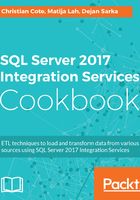
Introduction
The 2016 release of SQL Server Integration Services is a major revision of the software. But, instead of being a complete re-write of the product, it's more an evolution of the product. Here is the SSIS timeline since its beginning in SQL Server 7.0 (1998):

In the early years of SQL Server, Microsoft introduced a tool to help developers and database administrator (DBA) to interact with the data: Data Transformation Services (DTS). The tool was very primitive compared to SSIS and it mostly relied on ActiveX and T-SQL to transform the data. SSIS V1.0 (2005) appeared in 2005. The tool was a game changer in the ETL world at the time. It was a professional and (pretty much) reliable tool for 2005. 2008/2008 R2 versions were much the same as 2005 in the sense that they didn't add much functionality, but they made the tool more scalable.
In 2012, Microsoft enhanced SSIS in many ways. They rewrote the package XML to ease source control integration and make the package code easier to read. They also greatly enhanced the way packages are deployed by using an SSIS Catalog in SQL Server. Having the catalog in SQL Server gives us execution reports and many views that allow us access to metadata or metaprocess information in our projects.
Version 2014 didn't have anything for SSIS. Version 2016 brought other set of features, as you will see in the remainder of this chapter. We now also have the ability to integrate with big data, which we'll talk about in some later sections of the book.